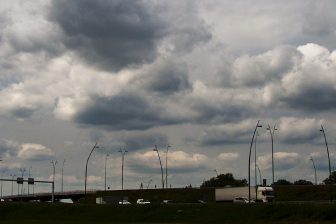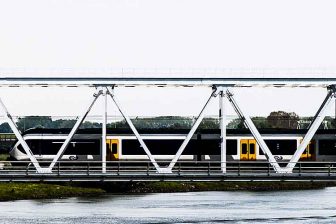Transport Ministers discuss transport congestion
Transport congestion: an unavoidable barrier to economic development?
Paris, France – On 30 and 31 May 2007 in Sofia, the Transport Ministers of 53 countries examined measures that could help to solve the growing paralysis of transport networks. This is the first time that the issue of congestion has been the main topic of Ministers’ discussions.
THE SITUATION
Transport congestion: a widespread problem
With the participation of certain key industry and private sector stakeholders, transport policy-makers at the highest levels of government from 53 countries(1) began the annual session of the ECMT/International Transport Forum with an overview of the current situation.
The congestion problems affecting transport networks in many countries take diverse forms, but can essentially be characterised as follows:
- chronic congestion on urban road networks and major trunk roads near large cities;
- chronic congestion on a small number of other roads of strategic importance;
- saturation of roads and railway lines serving ports;
- congestion at many border crossings, notably on the periphery of the >European Union countries.
recurring congestion at airport hubs;
Transport congestion: a high cost for the economy and the environment
According to concurring estimates, the costs generated by transport congestion could be as high as 1.5% of GDP in some countries. It is estimated that the delays caused by border crossings increase the cost of goods transported by 0.8% for each day of waiting at border crossings. The energy wasted due to traffic bottlenecks is contributing significantly to pollution and global warming.
Transport congestion: a problem that is expected to grow worse
All forecasts show that this problem will only grow worse in the future:
- the surge in car ownership and the growth of cities in countries with economies that have not yet reached maturity can only lead to rising levels of urban congestion worldwide;
- air passenger traffic is expected to double and air freight to triple over the next 20 years, with growing congestion at certain airports that cannot easily expand capacity due to environmental constraints and lengthy planning processes;
certain strategic roads will be increasingly affected by congestion. In the United Kingdom, the amount of traffic affected by high congestion is expected to rise from 8% in 2003 to 13% in 2005; in the Netherlands, motorway congestion is expected to increase by 30% by 2020; in the United States and Germany, maps forecasting road network congestion over the next 10-15 years are increasingly turning red as they show areas affected by road traffic congestion;
container transport from China to Europe is expected to increase by a factor of 8 to 11 by 2020 depending on the scenario. The worst congestion is expected to affect the roads and railways connecting ports with their hinterlands.
SOLUTIONS
A comprehensive strategy
After examining various measures that could reduce the growing congestion on transport networks, Transport Ministers agreed on the need to develop a comprehensive strategy to mitigate congestion, the broad lines of which were described in a series of Key Messages submitted for their consideration.
These Key Messages emphasise the need to look at congestion strategically and holistically using a package of policies and instruments. In particular, decision-making must focus on:
- improving system management through traffic management measures, improvements at inter-modal interfaces and trade facilitation, including measures to improve administrative and customs procedures;
- new technology – in particular Intelligent Transport Systems – that can facilitate traffic flows through better information to users, dynamic traffic management and reduced headways;
- implementing pricing measures: road congestion charging in London, Stockholm and Singapore has achieved significant reductions in urban congestion. Other charging initiatives involving intercity roads, railways, ports and airports have also proven their effectiveness in improving traffic flows;
- improving infrastructure capacity through appropriate investments that will produce clear socio-economic returns when measures for the better use of existing capacity have reached their limits.
Active involvement of Transport Ministers
To implement this strategy, Transport Ministers need to take the lead, although the solutions must come from a wide range of sectors. The importance of a properly functioning transport system for the economy, the environment and society is a compelling reason for Ministers to take action without delay on congestion mitigation by providing the right policy and institutional context. They must build political support with elected officials, across government and with other levels of authority. Dialogue with all these stakeholders is needed to ensure a coherent policy approach. They must also develop partnerships with industry and private sector actors to implement a coherent approach to reducing delays. Lastly, and this is certainly the key to the success of congestion mitigation policies, Transport Ministers must act vigorously to inform the public and raise awareness of the seriousness of the transport congestion problem — for which all members of society share responsibility through their behaviour – and its consequences for both the economy and the environment. It is only at this price that public support can be secured for measures that are sometimes unpopular, but that are indispensable to ensure that traffic paralysis does not bring the economy to a standstill and, quite literally, asphyxiate the population.
For more information, please consult www.InternationalTransportForum.org
1. Albania, Armenia, Australia, Austria, Azerbaijan, Belarus, Belgium, Bosnia Herzegovina, Bulgaria, Canada, China, Croatia, Czech Rep., Denmark, Estonia, Finland, France, FYR Macedonia, Georgia, Germany, Greece, Hungary, Iceland, Ireland, Italy, Japan, Korea, Latvia, Liechtenstein, Lithuania, Luxembourg, Malta, Mexico, Moldova, Montenegro, Morocco , Netherlands, New Zealand, Norway, Poland, Portugal, Romania, Russia, Serbia , Slovakia, Slovenia, Spain, Sweden, Switzerland, Turkey, Ukraine, United Kingdom, United States.
U las zojuist één van de gratis premium artikelen
Onbeperkt lezen? Profiteer nu van de introductieaanbieding voor € 10,- per maand.
Bent u al abonnee?



